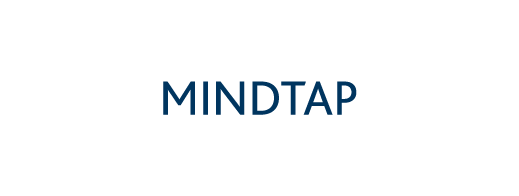Request for consultation
Your form is submitting...
Overview
Prepare students for today's rapidly changing audit environment as they develop professional and ethical decision-making skills with Zehms/Gramling/Rittenberg's AUDITING: A RISK BASED-APPROACH, 12E. This edition integrates the latest in standards, including new guidance on audit reports, fraud risks and audit evidence. Unique conceptual frameworks emphasize ethical decision-making skills and professional skepticism. A new framework guides student through using data analytics in auditing with simulation cases that integrate real-life data sets. Extensively revised content offers a stronger student focus with numerous learning features that encourage classroom discussion and hands-on opportunities that emphasize critical-thinking skills. Unique end-of-chapter Tableau®-based problems help students become formidable data-driven decision makers. MindTap digital resources include an interactive ebook and engaging, high-impact cases that reinforce data-driven decision-making skills.
- NEW DATA ANALYTICS PROCESS FRAMEWORK COMPLEMENTS CONCEPTUAL FRAMEWORKS. A new data-analytics process framework (Ch. 1) works seamlessly with the book's professional and decision-making frameworks. This new framework helps students understand the context and phases of data analytics. Students work with real-life data sets as they practice working with the framework in subsequent chapters. End-of-chapter cases integrate both data analytics and writing skills so students learn to summarize judgements in memorandum form in preparation for the CPA exam.
- A WEALTH OF NEW EXAMPLES HIGHLIGHT THE LATEST DEVELOPMENTS AND RECENT CASES ON FRAUD. To keep content current and relevant, this edition highlights new examples from the SEC’s Accounting and Auditing Enforcement Release database, the PCAOB’s enforcement actions and the PCAOB’s inspection reports. In addition, many new examples focus on newly discovered frauds from countries all around the world.
- RELEVANT, UP-TO-DATE COVERAGE FOCUSES ON THE LATEST, EVOLVING AUDITING STANDARDS. Revised content integrates examples and coverage of new standards, including audit evidence, assessing risks of material misstatement, using the work of specialists and accounting estimates. Chapter 15, in particularly, extensively discusses the new auditor reporting model in the U.S. and internationally, both in terms of CAMs and KAMs.
- EMPHASIS ON PROFESSIONAL SKEPTICISM INTRODUCES THE PRACTICAL APPLICATIONS OF THIS CONCEPT. From a questioning mind to critical assessment of auditing evidence, this book provides your students with the tools to apply the concept of professional skepticism. The authors introduce this topic in Chapter 1, while end-of-chapter problems throughout this edition help students see the practical applications and importance of professional skepticism.
- VALUABLE LEARNING FEATURES AND CHAPTER EXHIBITS REINFORCE LEARNING WITH MEMORABLE EXAMPLES. Each chapter contains multiple "Why It Matters" and "Focus on Fraud" features and related exhibits that highlight important, relevant and practical examples as well as key information related to the chapter's topics. Selected end-of-chapter problems further reinforce this information by requiring that readers review specific features and exhibits.
- FOCUS ON DATA ANALYTICS EMPHASIZES PRACTICAL APPLICATIONS. After this edition introduces the framework for employing data analytics in Chapter 1, subsequent chapters offer cases in which students analyze real-life data from the U.S. Department of the Interior and the City of Chicago. Chapter 8 focuses on the latest developments in today's rapidly changing field of data analytics. Later chapters include end-of-chapter Tableau®-based problems to help students develop the skills necessary to become data-driven decision makers.
- GENERALIZED AUDIT SOFTWARE WORKS SEAMLESSLY WITH UPDATED CASES. The most popular audit analytics software today is available to correspond with each new text. This new edition closely integrates the use of software into both homework and cases. An appendix and tutorial located at the end of the textbook provide guidance for students unfamiliar with the software. You can provide access to the software through the ACL Academic Network program, detailed in the Interview Guide.
2. The Auditor’s Responsibilities Regarding Fraud and Mechanisms to Address Fraud: Regulation and Corporate Governance.
3. Internal Control Over Financial Reporting: Responsibilities of Management and the External Auditor.
4. Professional Legal Liability.
5. Professional Auditing Standards and the Audit Opinion Formulation Process.
6. Audit Evidence.
7. Planning the Audit: Identifying and Responding to the Risks of Material Misstatement.
8. Specialized Audit Tools: Sampling and Generalized Audit Software.
9. Auditing the Revenue Cycle.
10. Auditing Cash and Marketable Securities.
11. Auditing Inventory, Goods and Services, and Accounts Payable: The Acquisition and Payment Cycle.
12. Auditing Long-Lived Assets: Acquisition, Use, Impairment, and Disposal.
13. Auditing Long-Term Liabilities and Stockholders' Equity Transactions.
14. Completing a Quality Audit.
15. Audit Reports.
ACL Appendix.
Case Index.
Why It Matters and Fraud Focus Index by Chapter.
Data Analytics cases by Chapter.
Index.
Cengage provides a range of supplements that are updated in coordination with the main title selection. For more information about these supplements, contact your Learning Consultant.
FOR STUDENTS
MindTap for Zehms/Gramling/Rittenberg's Auditing: A Risk Based-Approach, 1 term Instant Access
ISBN: 9780357721896
MindTap for Zehms/Gramling/Rittenberg’s Auditing: A Risk-Based Approach, 12th Edition is the digital learning solution that powers students from memorization to mastery. It gives you complete control of your course—to provide engaging content, to challenge every individual, and to build their confidence. Empower students to accelerate their progress with MindTap. MindTap: Powered by You.
MindTap gives you complete ownership of your content and learning experience. Customize the interactive syllabi, emphasize the most important topics, and add your own material or notes in the eBook.
